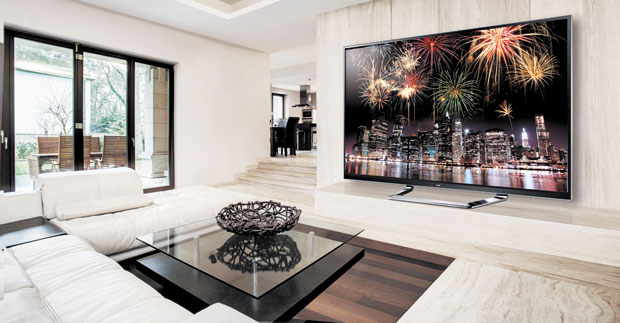The Ticket to Your Home Theater
Few things are more disappointing than turning on your new TV for the first time only to discover the picture doesn’t look as good as it did in the store. Or the audio balance is so far off that you feel like you’re listening from inside a tunnel.
The home entertainment center concept has evolved dramatically over the past decade. The technology today offers a more immersive experience. And with a proper set up, you can enjoy the full potential of the pride and joy of your living room.
Technologist and industry veteran Tom Campbell, who helped first launch high definition (HD) TVs and played a key role in the recent emergence of “Ultra HD,” has some tips for setting up the ideal viewing space for your home theater.
Control lighting
“While darkness is great in a big movie theater, it’s not always practical for your home theater. You’ll need to manage lighting in the room to ensure the best picture quality, whether you’re enjoying a family movie with the kids or watching the big game with friends,” Campbell said.
Choose adjustable lighting; place lights on a dimmer so that you can adapt the lighting level depending on what you’re watching. Outfit windows with shades that can easily be closed to further darken the room. For times when the lights will be on, be sure to position lights so that they won’t create glare on the TV screen. And, if possible, avoid placing your screen in direct light from outside, such as opposite a window.
Maximize TV positioning
Believe it or not, the TV’s height or the angle at which your eyes meet the screen can actually affect how good the picture looks. If you’re putting the TV on a stand, position the screen so that your eyes are level with the bottom third of the display. Generally, the center of your screen should be no more than 42 to 52 inches above the floor. If you don’t already have your TV, for the widest viewing angles you want a plasma or an LED TV with IPS technology, like LG, which ensures a good picture for off-angle viewing (both horizontal and vertical).
An adjustable wall mount can help you adapt the angle of the TV so you still have a straight-on angle and good picture. They can also help with different viewing arrangements or lighting conditions, based on the time of day.

Find the optimal viewing distance
The best quality equipment can leave you disappointed if you aren’t watching from the optimal viewing position. Sitting too close to a large-screen “FULL HD” TV can make the picture appear grainy. Too far, and you’ll lose the immersive feeling a big screen provides.
Opinions vary on what’s the best distance from which to view a screen. According to Brian Markwalter, senior vice president of research & standards for the Consumer Electronics Association (CEA), a simple way to calculate the optimal viewing distance is to multiply the diagonal size of your TV by two or three. “That number will tell you how many inches you should sit away from the screen for the best possible picture. Remember, though, to measure from the screen to the point where your eyes would be, not the back or front of the furniture you’ll be sitting on,” he said.
Keep in mind that in addition to the size of the screen, the resolution will affect your calculations. “A “4K” TV like LG’s 84-inch Ultra HD TV offers four times the resolution of typical HDTVs, meaning more detail, so viewers get a crisp, clear picture from as close as five feet. If you want a large screen in a small space, an Ultra HD TV is an ideal solution.
Take care of sound quality
Campbell advised that while you may love the look of your hardwoods and hate to cover up the view from the picture window, bare floors, walls and windows can make your home theater sound as if it has an echo or the sound is too sharp and bright. On the other hand, if the room is heavily padded with wall-to-wall carpeting, heavy drapes and lots of cushioned furniture, you may think sound seems muffled. A mixture of different surfaces and materials can help ensure the best sound quality.
This article is courtesy of Brandpoint.